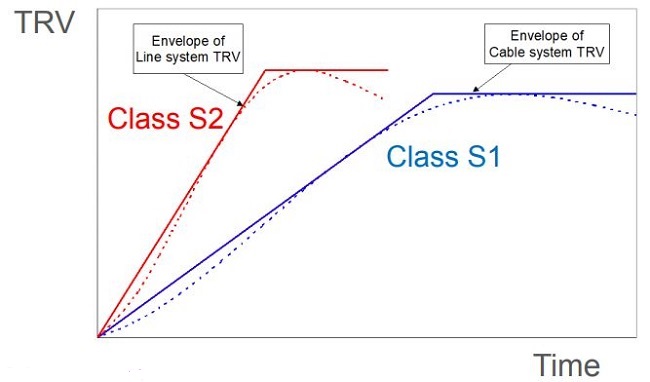
Two classes are defined:
- Class S1, circuit-breakers intended for use in cable systems
- Class S2, circuit-breakers intended for use in line systems or in a cable system with direct connection (without cable) to overhead lines.
A cable system is a system in which the TRV during breaking of terminal fault at 100 % of shortcircuit breaking current does not exceed the two-parameter envelope derived from
table 1 give in IEC 62271-100. for example circuit-breakers of indoor substations with cable connection are generally in cable-systems or circuit-breaker in an outdoor substation with length of cable connected on the supply side of the circuit-breaker is at least 100 m.
A line system is a system in which the TRV during breaking of terminal fault at 100% of short circuit breaking current is covered by the two-parameter envelope derived from Table 2 of table 2 give in IEC 62271-100.
Systems with overhead lines directly connected to a busbar are typical examples of line-systems.
Figure shown two circuitbreaker classes different(S1,S2) at full shortcircuit current, the RRRV in line systems is twice the value for cable systems.



